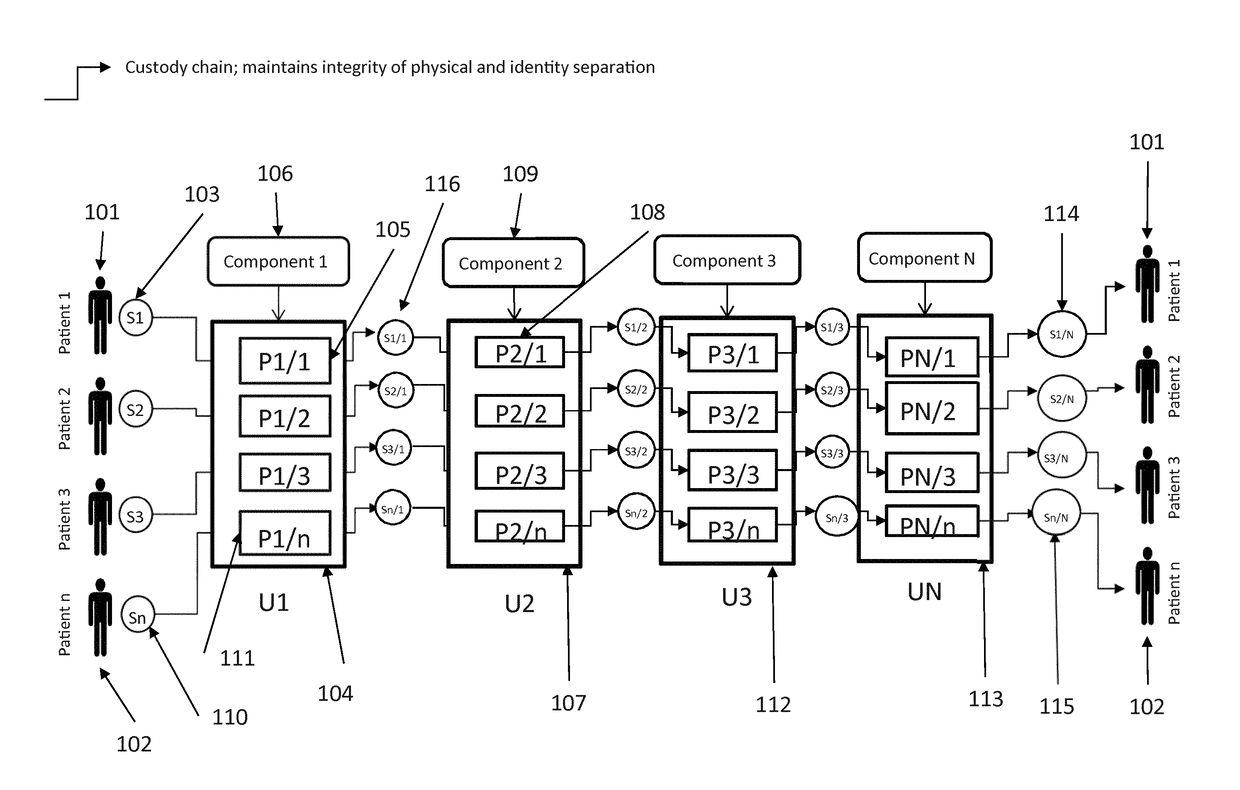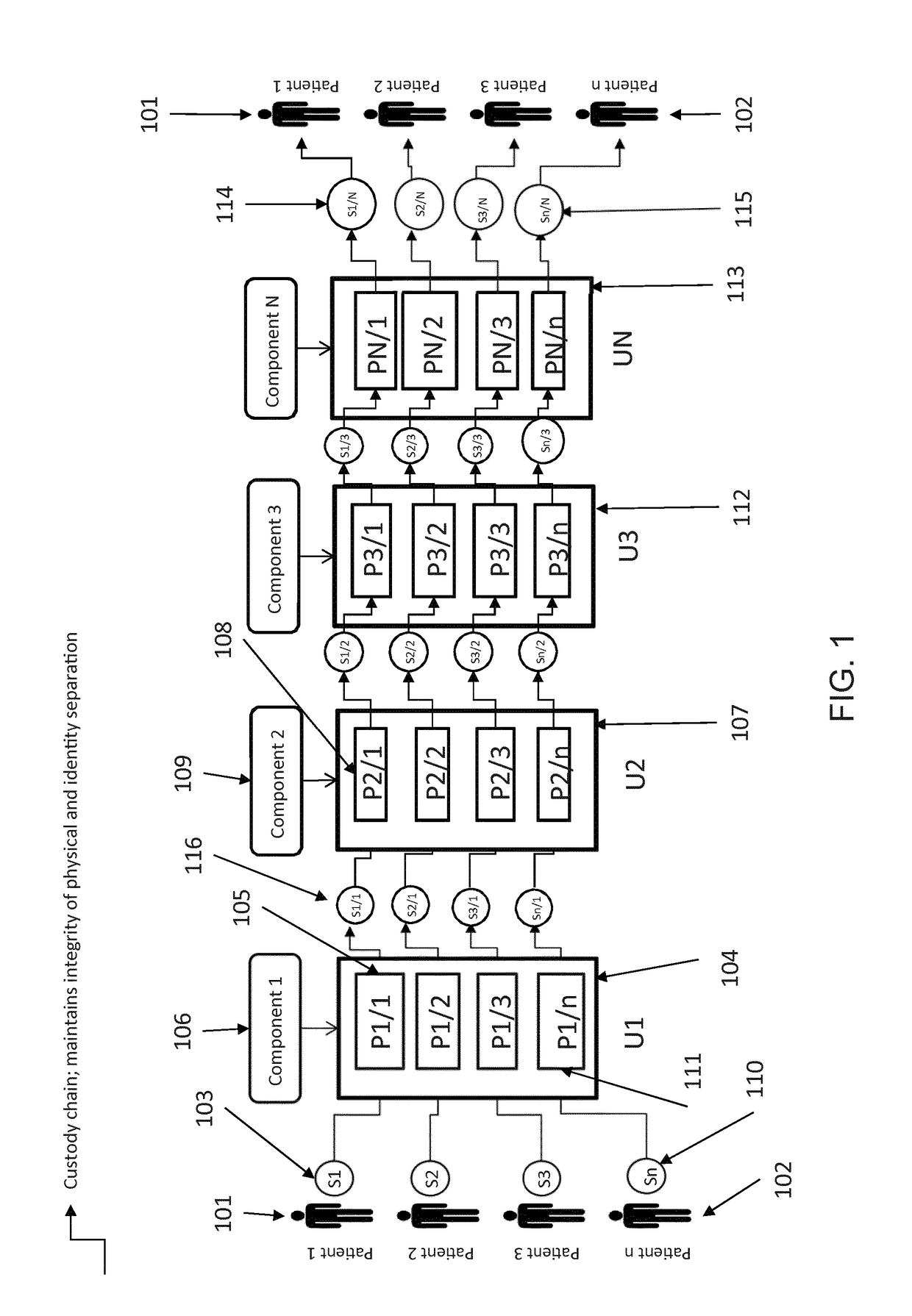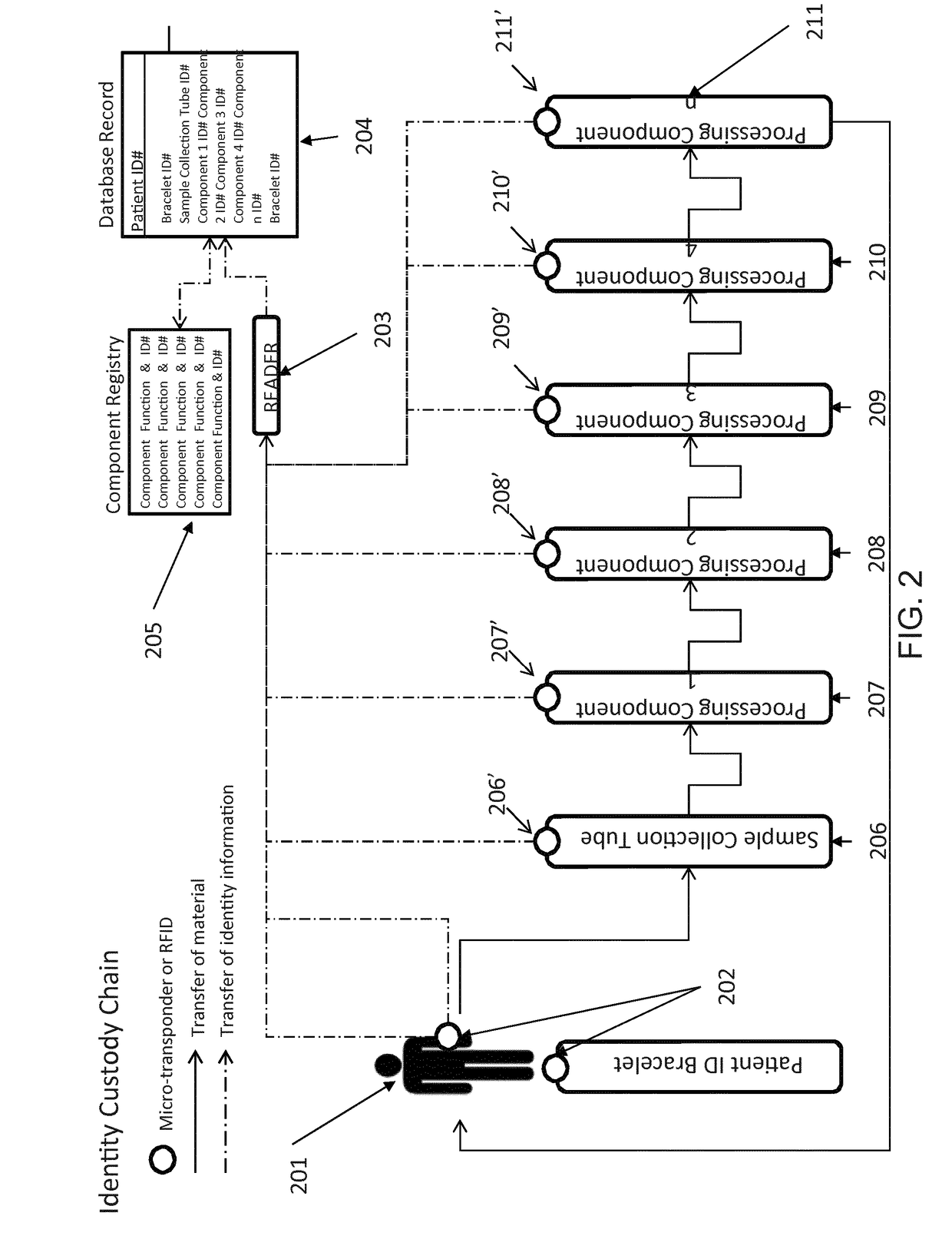Process Simulation in a Cell Processing Facility
process simulation technology, applied in the field of process simulation in a cell processing facility, can solve the problems of inefficient use of space and equipment, duplicated costs of providing space, services and equipment, and inability to reduce treatment costs
- Summary
- Abstract
- Description
- Claims
- Application Information
AI Technical Summary
Problems solved by technology
Method used
Image
Examples
Embodiment Construction
[0017]A scalable cell therapy facility comprises a number of discrete processing units (UNIT 1 to UNIT N) isolated from one another by physical walls, barriers or other demarcation. Each processing unit comprises a number of identical processing stations (P1 / 1 to P1 / n in UNIT 1; P2 / 1 to P2 / n in Unit 2; PN / 1 to PN / n in UNIT N) appropriate for the unique processing operation to be carried out within the unit. Patient samples (S1 to Sn) are received by UNIT 1 in uniquely encoded closed sample containers and processed on processing stations P1 / 1 to P1 / n using a separate uniquely coded closed disposable processing component 1 for each sample. Processed samples in closed components appropriate to the workflow stage are sequentially passed through UNIT2 to UNIT N to complete the processing workflow using uniquely coded closed processing components 2 to N at each stage. At each stage of processing transfer of processed patient material from component to component is tracked by recording com...
PUM
 Login to view more
Login to view more Abstract
Description
Claims
Application Information
 Login to view more
Login to view more - R&D Engineer
- R&D Manager
- IP Professional
- Industry Leading Data Capabilities
- Powerful AI technology
- Patent DNA Extraction
Browse by: Latest US Patents, China's latest patents, Technical Efficacy Thesaurus, Application Domain, Technology Topic.
© 2024 PatSnap. All rights reserved.Legal|Privacy policy|Modern Slavery Act Transparency Statement|Sitemap



